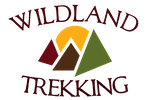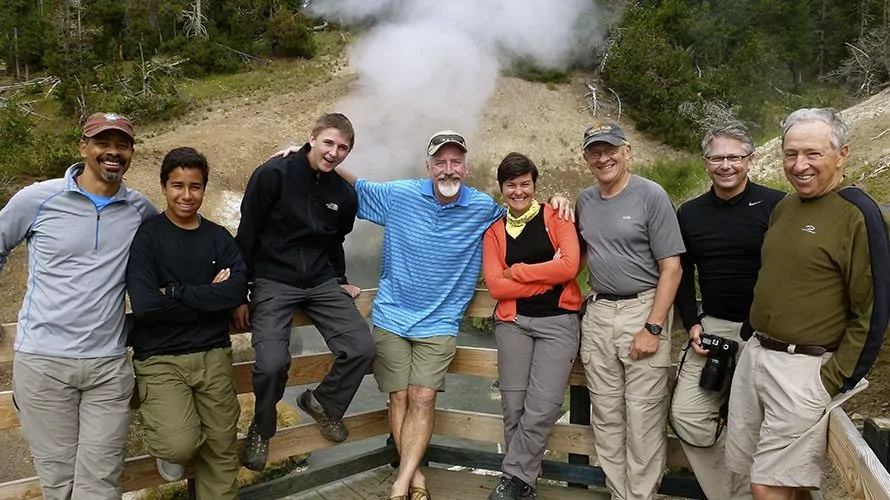
Best of Yellowstone Tour
Yellowstone National Park, WY
Description
Our Best of Yellowstone Tour features a diverse offering of 5 Yellowstone hikes that well represent the amazing attributes of America’s first national park. You’ll enjoy breathtaking mountain scenery, the most well-known and spectacular geysers in the park, and wildlife viewing. While driving, we can often stop at pullouts as animal sightings and additional attractions arise in this unpredictable ecosystem. You’ll also enjoy the luxuries of a lodge and rustic dining each evening in two to three different locations inside and around the Park. This trip is an exceptional way to soak up the magic of Yellowstone, to enjoy absolutely fantastic hiking, and to learn about America’s first – and truly spectacular – national park!
What sets the 5-day tour apart is the ability to see so much in one visit. Staying in different lodges and going on five diverse hikes creates a comprehensive experience that is truly unforgettable!
Need to Know: Hotel Deadline
New reservations on this trip within 45 days of trip start date are highly unlikely due to Yellowstone National Park’s lodging cancellation policies. It’s highly recommended to book at least 46 days in advance!
| Trip Type: Inn-Based Hiking Tour |
Difficulty Level:
|
|
Solitude Level:
|
Group Size: 2-10 Guests |
| Trip Length: 5 Days | Distance: 30MI / 48KM |
|
Hiking Distances: 5-7 mi |
Backpack Weight: 8-12 lbs |
|
Terrain: Lightly Rugged |
Max Daily Elev. ↑↓: 1384 ft |
|
Heights Exposure: Light |
DIFFICULTY LEVEL 2
Scale of 1-5. 1 is least difficult; 5 is most difficult
The majority of trails on this trip are well used and well maintained. The starting elevation and elevation gain on the Day 2 ascent of Mount Washburn can be more strenuous for guests that live close to sea level. Expect moderate distances and difficulty levels throughout this tour.
Please Note: Terrain, Elevation Gain and Heights Exposure ratings reflect the section or day of the trip with the maximum difficulty of each. Much of the trip is at easier levels. See the trip itinerary for more detailed information.
PHYSICAL DEMANDS OF THIS TRIP
- Hiking uphill or downhill with a 8-12 lb backpack for 5-7 hours
- Maintaining balance and footing on lightly rugged terrain
SOLITUDE LEVEL 2
1 least solitude, 5 most solitude
We rate this Yellowstone hiking tour a solitude 2. You can expect as much as an hour of solitude at a time.
Learn More about our Rating SystemWhat’s Included
- 4 nights of double occupancy lodging (single occupancy requires an additional single supplement)
- Top-of-the-line daypack and trekking poles
- All meals are included from breakfast the first day through lunch on the last day
- A professional, knowledgeable, certified Yellowstone hiking guide
- Roundtrip transportation from your hotel in Jackson Hole, WY; Victor, ID or Driggs, ID
- Entrance fees and national park permits
- Bear safety equipment including bear spray cannisters
- Emergency equipment including a company-issued first-aid kit and communication device (InReach Explorer or satellite phone)
- Mandatory 5% national park fee that passes through directly to Yellowstone
WHAT’S NOT INCLUDED
Day 1
- Shuttle: 2-hour drive
- Hiking Mileage: 6 miles
- Elevation Gain/Loss: 800 feet
This Yellowstone Hiking Tour starts with a loop around Elephant Back Mountain, a moderate 3.6-mile hike with about 800 feet elevation gain and loss. The trail begins in an old growth lodge pole pine forest mixed with spruce and fir, an area also frequented by grizzly bears. After a mile of relatively mild uphill, we will climb switchbacks. Flecks of black obsidian will glitter beneath your feet. The ascent culminates to an awe-inspiring bird’s eye view of the lake. We can identify many prominent landmarks from our peak, before making our trek back down the Elephants Back. The glittering expanse of Yellowstone Lake will be the focal point of our next hike’s destination: Storm Point. This relatively flat 2.3-mile loop leads to a stunning vista of the largest lake above 7,000 feet in North America. In spring, the lakeshore is a corridor for grizzly bears. The hike begins at Indian Pond, a favorite locale for bison, and continues through the forest to a bluff overlooking the picturesque shore of this hydrothermal fed lake. Before completing our loop, we will walk past enormous boulders, which are home to a colony of Yellow-bellied Marmots. If we are lucky, we may see one basking in the sun.
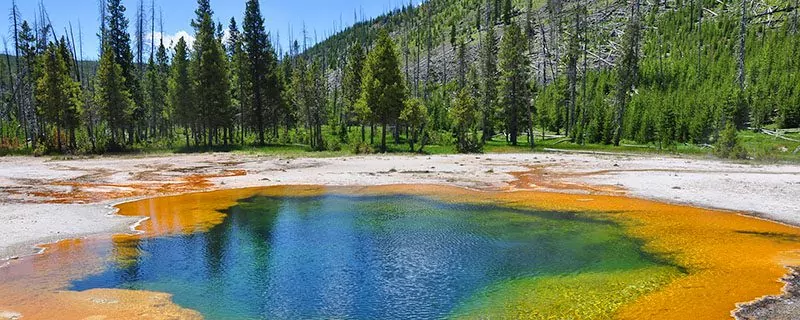
Day 2
- Hiking Mileage: 6 miles
- Elevation Gain/Loss: 1,400 feet
Our second hike is one of the most beautiful in the park, a hike to the summit of Mt. Washburn at over 10,000 feet. The trail to the summit travels through picturesque subalpine parkland where wildflowers abound. Bighorn sheep are sometimes seen grazing along the hillsides. This is one of the only places in the park where hikers can get close up views and photos of the majestic sheep as they are habituated to the presence of hikers. It is a steady climb over 3 miles to the summit where we’ll have a tremendous view of the Grand Canyon of the Yellowstone – a giant rift in a landscape of forested hills. Other sites include Yellowstone Lake, the Teton Range, Electric Peak, and an overall sense that the entire park stretches out below your feet. Following this beautiful hike, we’ll drive to the Grand Canyon of the Yellowstone for a short stroll out to Artist Point for one of the more phenomenal waterfall views in North America – the Lower Falls of the Yellowstone River. The Grand Canyon of the Yellowstone is an amazing feature at 20 miles long, 1,200 feet deep, and a mere 4,000 feet in width on average. It was formed approximately 10,000 years ago when a large glacial ice dam in Hayden Valley burst, flooding the canyon and creating the two thunderous waterfalls and multicolored canyon walls it is known for.
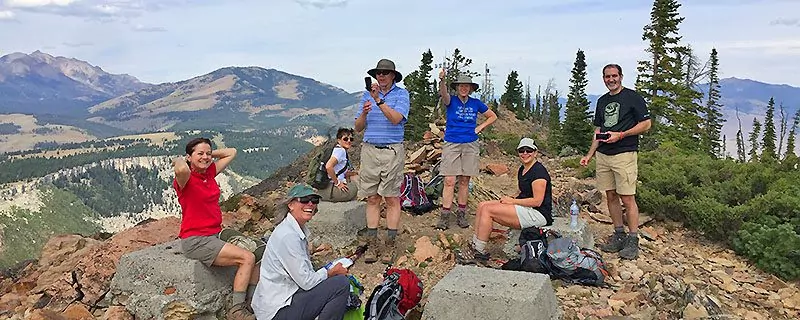
Day 3
- Hiking Mileage: 5 miles
- Elevation Gain/Loss: 400 feet
Today, we visit one of the Park’s most iconic features – Mammoth Hot Springs. From the boardwalks, we will view steaming travertine terraces streaked with colorful microorganisms.
Next, we will leave the crowds behind and head out on the Beaver Ponds Trail. This 5-mile loop leads us along a variety of different animal habitats. We will hike through a forest that is frequented by a variety of wildlife including bears, eventually reaching a clearing of small ponds where it is common to see waterfowl. Open scenic views will greet us as we emerge onto a grassy hilltop that is a known grazing area for pronghorn, deer and elk.
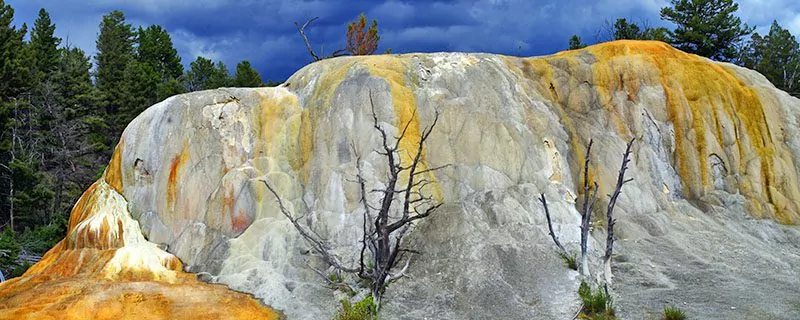
Day 4
- Hiking Mileage: appx 7 miles
- Elevation Gain/Loss: minimal
We’ll start the day in the Upper Geyser Basin which hosts some of the park’s most iconic features. Yellowstone is home to 60% of the world’s geysers and most of them can be found here, including Old Faithful itself. Walking the boardwalks, we’ll experience the basins’ diverse array of geysers from thin fountains to massive eruptions. It is an impressive scene. Next we’ll travel a few miles down the road for a hike out to Lone Star Geyser. This is a beautiful hike along the aptly named Firehole River to the largest backcountry geyser in the park: Lone Star Geyser. Lone Star is found in a clearing surrounded by dense forest; it erupts from a shed-sized cream colored mound. At full tilt it sprays scalding water 30-45 feet into the air. The geyser erupts about every 3 hours and a log book is kept nearby so that we’ll know when the next eruption will occur.
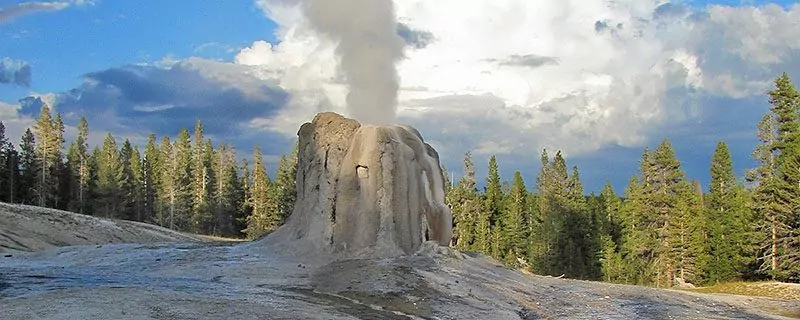
Day 5
- Hiking Mileage: 5.4 miles
- Elevation Change: 200 feet
- Shuttle: 2.5-hour drive
Our final day’s hike takes us through classic Yellowstone meadows and lodgepole pine forests to Fairy Falls, a 200-foot waterfall plunging off a pine-studded cliff. After we soak up the sights and sounds of Fairy Falls, we will end our tour with a stop at the Grand Prismatic overlook. The Grand Prismatic is the largest hot spring in the United States and one of the most iconic features in the park. It’s a great way to close out our Yellowstone adventure. We will conclude our trip with a shuttle back to Jackson Hole and fond farewells. What a week it’s been!
Please Note: We always do everything in our power to follow the set itinerary, however it can change occasionally based on temporary access restrictions, weather, lodging/campground availability, guest ability/injury, natural events like fires and flooding, and other potential causes. Normal terms and conditions apply to trips with itinerary changes.
PACKING LISTS

IMPORTANCE OF BEING PREPARED
Your safety and enjoyment will depend on your level of preparedness. It is your responsibility to arrive with the items listed below. Our Gear Guide is a resource to find more information about these items and links to online options. If you have additional questions about what to pack, please ask your guide during the pre-trip contact (~10 days prior to the trip start date) or call our Adventure Consultants 7 days a week at 928-223-HIKE (4453).
STANDARD CLOTHING CHECKLIST
The following items are required for your trip unless otherwise noted. When packing, think layered clothing systems that work together and can be easily added or removed.
(GG) = Gear Guide: see for more info and links to product options
- Hiking Boots/Shoes – mid-weight, lug-soled, waterproof, and ideally well broken in (Boots GG – Shoes GG)
(Note: buy your boots/shoes 1/2 size to 1 size larger than your street shoes to allow for feet swelling and thicker socks) - Secondary Footwear – supportive, lightweight, well-drained shoe or sport sandal for creek crossings and/or for comfort (Camp Shoes GG)
- Hiking Socks – one pair for every day or two days of your trip. Hiking specific padded socks, no cotton please! (Socks GG)
(Note: wearing thin liner socks under your hiking socks can help prevent blisters) - Sun Hat – wide-brimmed hat or baseball cap/bandana combo (Sun Hat GG)
- Warm Hat & Gloves – lightweight beanie and light-to-mid weight fleece or wool gloves (GG)
- Hiking Shirts – non-cotton, breathable short sleeve and/or long sleeve shirts (Hiking Shirts GG – Sun Hoodies GG)
(Note: long sleeve shirts provide better sun protection) - Warm Top – mid-weight sweater or pullover of wicking material – merino wool, fleece or polypropylene (Mid Layers GG)
- Mid Layer Insulating Jacket – down-fill or synthetic-fill insulated “puffy” jacket or warm, heavy weight fleece jacket (Mid Layers GG)
- Hiking Pants & Shorts – nylon pants AND shorts, zip-offs or leggings (Hiking Pants GG – Hiking Shorts GG)
- Rain Gear – waterproof jacket and pants, breathable fabric such as Gore-Tex® or coated nylon. For the pants look for side zippers that will allow you to pull them over your boots. (Rain Jackets GG – Rain Pants GG)
- Mosquito headnet – recommended for June/July, usually when there is a significant amount of mosquitos and bugs in the area. Aug/Sept may be needed but will be weather dependent.
- Casual Clothing & Footwear – comfortable clothes and shoes for evenings off the trail
- Personal Luggage – small duffel bag, suitcase or backpack – for extra hiking clothes and casual clothes
Important Note: Please, no cotton hiking clothes and please feel free to call us if you have any questions or you can reference the Gear Guide.
Gear Checklist
- Hydration System – 2+ liters capacity, either water bottles or bladder/hose system and an additional water bottle (Hydration Bladders GG)
(Note: We recommend always having a bottle with 1 liter of capacity as a back-up in case of a hydration system failure and to use while in camp) - Headlamp – preferably with an L.E.D. bulb that works with AA or AAA batteries (Headlamps GG)
(Note: always test your headlamp before trips, travel/pack without batteries in device, and for longer trips (4+ days) consider a spare bulb and 1 set of spare batteries) - Contact Lenses and Glasses – if you wear contact lenses, please also bring a pair of glasses – your contacts are likely to become dirty and may be difficult to clean
- Sunglasses, Sunscreen, Lip Balm
- Bug Repellent – preferably a product containing at least 25% “DEET”
(Note: some people are sensitive to this product) - Toiletries
- Prescription Medication – please inform your trip leader of any medications you are taking
- 1-2 Face Masks (Recommended but Optional)
- Money – for any shopping you would like to do and for consideration of tipping your guide
(Note: tipping is optional but appreciated, industry recommendation is 10-20% of your trip cost based upon the quality of your experience)
OPTIONAL ITEMS
- Personal Trekking Poles – as a Wildland guest, you can enjoy a 20% discount off Leki trekking poles (reservation number required.) Click here for discount. Trekking poles are provided for guests who do not bring their own. (Trekking Poles GG)
- Swimsuit
- Support Braces – consider bringing any joint braces that may be currently needed or from past injuries (i.e. knee, ankle, elbow, etc…)
- Vitamins & Supplements
RENDEZVOUS, TRANSPORTATION & LODGING

VIRTUAL PRE-TRIP ORIENTATION
Your pre-trip orientation meeting will be done virtually on a conference call with your guide and the other guests at 5:00 PM the evening before your trip starts. Your guide will go through the packing list, communicate the first day’s logistics, and answer any last minute questions you have. Your guide will give you the phone number for this meeting approximately 10 days before the trip start date.
PICK UP Locations
- Jackson Hole, WY
- Victor, ID
- Driggs, ID
Your guide will coordinate the time of pick up during the pre-trip orientation conference call.
ARRIVAL AND DEPARTURE DATES
Travel to and from the trip starting point is not included in the cost of our trips. Please plan on arriving the day before the trip leaves and departing the day after getting back from the field.
TRIP CONCLUSION
This trip will conclude at approximately 7:00 PM on the last day with drop-off in Jackson Hole, Victor or Driggs.
GATEWAY CITIES
Jackson Hole, WY
Jackson Hole Airport is served by several national carriers. Esquire Transport (307-377-8473) provides a shuttle into Jackson from the airport. Advance reservations are recommended. Hotel shuttles, Uber and Lyft are also options. If staying in Victor or Driggs, the START Bus offers a very affordable daily commute from Jackson: click here and select “Teton Valley (TV) Commuter” to see the schedule.
Idaho Falls, ID
Idaho Falls is home to a regional airport serviced by several national carriers. Flights tend to be less expensive than Jackson Hole. Salt Lake Express (800-356-9796 or 208-656-8824) offers two daily shuttles from Idaho Falls to Jackson Hole. Other options to Jackson, Driggs or Victor are a rental car, Uber or Lyft.
Salt Lake City, UT
You can also fly into Salt Lake City and drive to Jackson Hole. It is a 4.5-hour drive from Salt Lake City to Jackson Hole on good roads. Salt Lake Express (800-356-9796 or 208-656-8824) and Mountain States Express (307-733-4629) offer daily vans from Salt Lake City to Jackson Hole. Advance reservations required.
STORAGE OF PERSONAL ITEMS & VEHICLES
The most secure option for your luggage will be to store it with the hotel you’ll be using before and after the trip if they allow it. The best option for your vehicle is long term parking at the Jackson Hole Airport which is $12/night. If you run into problems with where to store luggage or vehicles, please let us know.
Pre & Post-trip on request lodging
We secure limited amounts of pre and post trip lodging in Jackson, Wyoming as an optional add-on for guests of this trip. This lodging is on request, and is available on a first come, first serve basis. If interested, please reach out directly to our team to check availability.
PRE & POST-TRIP RECOMMENDED LODGING
If booking pre- and post-trip lodging on your own, we recommend the below-listed accommodations. Staying in downtown Jackson is an enjoyable experience with fine dining and a diversity of great food, shopping, a nightly town square “shootout” (a mock shootout by actors in western costume), a rodeo at least two nights a week, and fresh mountain air. Make your reservations early as Jackson is a tourist community and rooms book early.
Victor, ID and Driggs, ID offer a more affordable (and often more available), rural, small-town guest experience below the majesty of the Grand Teton.
JACKSON HOLE
Mountain Modern Inn (Recommended*)
* This is also the location of the pre/post trip on request lodging
Website / Phone: 307-733-4340
49er Quality Inn and Suites
Website / Phone: 307-733-7550
Antler Inn
Website / Phone: 307-733-2535
Elk Country Inn
Website / Phone: 307-733-2364
Wyoming Inn of Jackson Hole
Website / Phone: 307-734-0035
The Lexington at Jackson Hole
Website / Phone: 307-733-2648
Super 8 by Wyndham Jackson Hole
Website / Phone: 307-733-6833
The Cache House (Hostel)
Website / Phone: 307-733-3668
VICTOR, ID
Fin and Feather Inn
(Does not allow long term parking)
Website / Phone: 208-787-1007
Teton Valley Motel
Website / Phone: 208-787-6666
DRIGGS, ID
Teton West Motel
Website / Phone: 208-354-2363
Super 8 by Wyndham Driggs
Website / Phone: 208-953-1919
TRIP INSURANCE
We strongly recommend purchasing trip insurance. We designed our terms and conditions with trip insurance in mind. When you register for a trip, your spot is no longer available to other guests. Therefore, if you discover inside of 30 days (prior to your trip departure date) that you are unable to travel, no refund is available. With trip insurance, not only is your payment to Wildland covered, but your flights, hotels and other travel costs can also be insured.
Read more about our trip insurance recommendations.
CHECK THE WEATHER FORECAST FOR YOUR TRIP
We recommend using NOAA’s website (www.weather.gov) for the most accurate 5-day weather forecasts. Click here to see a forecast for Yellowstone National Park.

PACK WEIGHT AND CONTENTS
You will be hiking with a light day pack that we provide. You’re also welcome to bring your own. The contents will be what you need for the day – rain gear, an extra layer or two, snacks, water, sunscreen…etc.
ESTIMATED PACK WEIGHT: 8-12 POUNDS
ESSENTIAL ELIGIBILITY CRITERIA
Essential Eligibility Criteria (“EEC”) have been specifically identified to help you understand the skills and abilities necessary to participate on each Wildland trip, and they apply uniformly to all potential trip participants, irrespective of the presence or absence of any disability.
Once you identify a trip in which you may be interested, please carefully review the EEC and itinerary details. If after reviewing the EEC that apply to your desired trip, you determine you need an accommodation in order to meet the EEC, please contact us prior to registering to discuss your requested accommodation.
The EEC exist for your own safety and the safety and enjoyment of all participants. If you are unable to meet the EEC for the trip, with or without an accommodation, you are not eligible for that trip. If you register and arrive for a trip for which you do not meet the EEC, you will be disqualified from participation on the trip and will be dismissed or evacuated from the trip without a refund.
TRAINING TIPS

The better shape you’re in the more fun you’ll have! We recommend very strongly that you train for your trip.
TRAINING BY HIKING
If you have access to hiking trails in hilly or mountainous terrain, this is the ideal way to train. If not, we recommend using the Stairmaster machine (with rotating stairs like an escalator) or actually training on stairs. Nothing prepares you for a trip better than the activity itself!
Train at least 3 days a week. Start with short hikes or workouts (1-hour in length) with a light daypack. From week to week build the length and intensity of your hikes/workouts and gradually increase your pack weight until you’re comfortably able to hike 6-8 hours a day carrying the weight you’ll have on your trip. It’s best to begin your training regimen at least 12 weeks prior to your trip. Also be sure to use the boots you’ll have on your trip to break them in.
Following is how a program may look:
| First Week | Work Up To |
| Tuesday: 1-hour hike/workout with daypack Thursday: 1-hour hike/workout with daypack Sunday: 2-hour hike/workout with daypack |
Monday: 2-3 hour hike/workout with daypack Wednesday: 2-3 hour hike/workout with daypack Thursday: 2-3-hour hike/workout with daypack Sunday: 7-hour hike with the weight you’ll have on your trip |
SUPPLEMENTAL TRAINING IDEAS
There are many other activities that are easily incorporated into your daily life to build your overall fitness. Cross training is important to strengthen opposing muscle groups and it helps to avoid over-use injuries. Supplemental training ideas include:
- Bike to work or when running errands.
- Gym activities including step aerobics, treadmill, bicycling, or elliptical trainers to name a few. A modest weight training program focusing on the muscles that support the ankles, knees, back, and shoulders is also beneficial.
- Swimming is a great way to build endurance and cardiovascular fitness and is easy on the joints.
- Walk to work instead of driving. Run your errands by walking and carry your groceries home in a backpack.
- Yoga and/or Pilates classes can build strength throughout your body while also improving your flexibility.
- Intramural sports
- Jogging is another option, however if you are not a regular runner it can easily lead to injuries that backpacking may then exacerbate. Undertake a jogging routine with care.
FLEXIBILITY AND HYDRATION
Flexibility is an important part of training. Remember to stretch before and after your workouts. For the two weeks leading up to your trip cut your workouts in half to avoid arriving fatigued. Also for a 72-hour period before your trip commences, ensure that you are consuming sufficient amounts of sodium and fluids. Doctors agree that hikers increase the likelihood of experiencing problems if they are sodium depleted (e.g., follow a low sodium diet) or are dehydrated (due to travel or using diuretics such as coffee or alcohol).
Important note: Always consult with your physician before commencing with a workout program.
GROUP TRAVEL

If you’re joining one of our scheduled trekking tours you’ll be hiking with fellow outdoor enthusiasts. Please carefully examine the trip materials and difficulty level prior to registering to select a trip that matches your ability level. If you need assistance selecting the right trip we are more than happy to help.
We make every effort to accurately set expectations and effectively screen guests, however it is inevitable on some trips there will be a discrepancy in fitness levels. Consider that the trip may be a once in a lifetime opportunity for your fellow travelers and it is important to respect each guest’s individual condition, needs and desires.
Finally, guided groups are required by land management agencies to stay together on the trail. Hiking together can require patience and flexibility. If hiking at a very specific pace is extremely important to you, you may want to consider booking a private trip.
 TIPPING YOUR GUIDE
TIPPING YOUR GUIDE
Tipping your guide is greatly appreciated! Wildland guides, and outdoor/backcountry guides in general, do much more than lead guests down the trail. Although supported by amazing in-town staff, they often work independently in the field due to permit and logistical constraints. The guide is responsible for the group’s safety, menu planning (including dietary restrictions), cooking for the group, prepping and taking care of the gear, handling livestock (on stock-supported trips), driving, complying with government regulations, ensuring guest satisfaction, and generally making sure the tour runs smoothly. They wear many hats and are extraordinary at what they do!
The industry standard tip amount for hiking and backpacking guides is between 10% and 20% of the tour cost per person, depending on your level of satisfaction. If you have any questions about tipping, feel free to call us 7 days a week at 800-715-HIKE (4453)!

GUIDE SHIFTS
Guides are required to take 8 hours off each 24-hour period to sleep, recuperate, take personal/down time…etc. In addition, as part of the 8 hours off they must sleep/rest or be in their tents/rooms uninterrupted for a minimum of 5 hours each night. We ask guests to respect these requirements and to not interrupt guides’ off time and sleep time unless there is a true emergency.

Thank You! The Wildland Trekking Company is dedicated to delivering an exceptional travel experience that exceeds your every expectation. We believe travel and adventure are two of life’s great joys and take seriously our role in helping you create a trip of lasting memories. In addition to our role as your travel partner and outfitter we are dedicated to the promotion of stewardship and conservation in the regions we visit. One of our commitments is to use Wildland as a tool toward long-term sustainability of the Earth’s environment and its communities. If there is anything we can do to further inform or help you prepare for your upcoming adventure please do not hesitate to contact us. Thanks for the opportunity to serve you and we look forward to seeing you soon!

800-715-HIKE (4453)
Feel free to call us for more info – we’re here 7 days a week!

